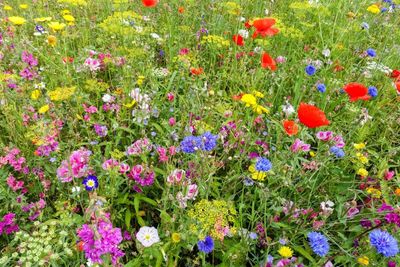Selecting Wildflowers for Zone 4 Gardens
Before delving too far into wildflower selection, it’s important to understand that USDA zones are based on temperature, and not necessarily on geography. A flower that’s native in one part of zone 4 may be invasive in another part. This is especially important to remember when planting wildflowers, as they are usually self-seeding (and more likely to spread) and because they are often meant to be low maintenance and able to survive in their native environment with very little intervention. You should check with your local extension office to learn more about native wildflowers before sowing any seeds. With that disclaimer, here are some zone 4 wildflower varieties that ought to thrive in your zone.
Zone 4 Wildflower Varieties
Golden Tickseed – Hardy all the way down to zone 2, this flowering coreopsis plant reaches 2 to 4 feet (61 cm. to 1 m.) in height, produces stunning yellow and maroon flowers, and self-sows very readily. Columbine – Hardy to zone 3, columbine plants produce delicate, colorful flowers that are very attractive to pollinators. Prairie Sage – A 4 foot tall (1 m.) perennial that produces delicate sky-blue flowers in late summer and early fall, prairie sage is hardy to zone 4. Spiderwort – This perennial has attractive grassy foliage and showy, three petaled purple flowers. Spiderwort is a great plant for adding coverage to much needed locations of the garden. Goldenrod – A classic wildflower, goldenrod puts out fluffy plumes of bright yellow flowers that are great for pollinators. Milkweed – Famous for attracting monarch butterflies, milkweed will grow in a wide variety of conditions and produces beautiful clusters of flowers. New England Aster – A self-sowing, clumping plant that produces a bounty of colorful, daisy-like flowers, New England aster is great for attracting goldfinches.
